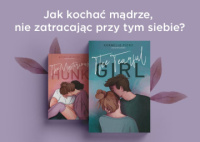Beyond Words
J. Ruszkiewicz
Beyond Words is a highly visual, thematically-organized reader intended for use in introductory composition courses. With 350 images and over 70 readings, Beyond Words offers a rich environment in which students can learn strategies for reading and responding to both verbal and visual texts and practice informative, analytical, and persuasive writing. With more writing process instruction than similar texts, Beyond Words is the most accessible and teachable visual reader available today. The topics of its chapters and readings resonate with many of the most popular themes taught in composition courses: identity, place, storytelling, news and media, consumer culture, information technology, advertising, health and fitness, public memorials. The end-of chapter "Assignment and Projects" sections offer uniquely in-depth and detailed assignments, while also providing unique student samples. Writing assignments begin with informative writing, move to analytical writing, and conclude with persuasive writing. The opening chapters present an overview of critical reading and writing strategies in language that completely avoids jargon and composition terminology in favor of a transparent and common-sense style that students will appreciate and enjoy. Chapters 1 & 2 provide more extensive and detailed instruction in reading and writing about verbal and visual texts than any other visual reader.Chapter 1 introduces a framework for reading, built around "key questions" that students should consider when they go to read a text, such as:What do you see?What is it about?To what does it relate?How is it composed?What details matter in the text?Chapter 2 offers a framework for writing, also built around "key questions" that students can use to guide their work as they compose different texts and complete the writing assignments later in the book: What's it to you?What do you want to say about it?Who will listen?What do you need to know?How will you do it?How well does it work?Reading chapters (Chapters 3-8) have a dual thematic and "aims" focus. The sequence of chapters follows the common introductory composition course assignment progression from personal writing, through informative and analytical, to persuasion and argument. This structure allows flexibility, supporting either a thematic or an aims-based course. Chapters 3-8 each open with an extensive, illustrated "reading" section that presents critical reading strategies tailored to the genres and types of texts presented in the chapter. (For example, Chapter 8 begins with an extended discussion of "reading arguments.") Over 70 readings and 250 images in the book offer a mix of historical and contemporary texts. Cultural issues and events are presented in a way that allows teachers to discuss tradition, history, and cultural context, and to help students see connections between today's culture and what's come before. Examples of contemporary texts:Poems by Billy Collins, Luci Tapahanso.Jim Goldberg, photo essay on homeless teens, "Raised by Wolves".David Brooks on suburbia/exurbia.Susan Sontag on war photographs.Story by Sherman Alexie.Examples of historical texts:Shakespeare sonnets.Steinbeck, excerpt from Grapes of Wrath.Edward Curtis photos.Dorothea Lange photos.Elizabeth Bishop poem.Paintings by: van Gogh, Vermeer, and Durer.Classic film stills from: Casablanca and North by Northwest.Readings and image selections feature the work of many well-known writers and visual artists. Recognizable authors include: Sherman Alexie, Alice Walker, Henry Louis Gates, Jr., Anna Quindlen, Susan Sontag, David Brooks, N. Scott Momaday, Luci Tapahanso, Susan Bordo, Charles McGrath, and Virginia Postrel. And well-known visual artists include: Milton Glaser, Robin Williams, Maira Kallman, Frank Gehry, Vermeer, Stephen Breen, Eric Allie, Mark Ulriksen, Dorothea Lange, Bill Greene, Van Gogh, Walker Evans, Edward Steichen, Edward Curtis, Lauren Greenfield, Jim Goldberg.At the end of Chapters 3-8, "Assignment and Project" sections feature detailed assignment and project guidelines with extensive "how-to" advice for students. Several assignment options are included in each chapter, directing students to practice the different "aims" of writing, with both traditional paper options and alternative "media" and visual projects. Some examples of these assignments:Identity collage.Researched profile of an artist/photographer.Analysis of a representation of a place.Field observation and analysis of a public place.Film review.Photo essay.Analyzing and comparing advertisements.Analyzing design and context.Rhetorical analysis: comparing visual arguments.A visual argument.Sample student papers and projects are also included in the "Assignment and Project" sections at the ends of Chapters 3-8, offering helpful models for students and teachers and insight into how other students have completed some of the major assignments in the book. Some examples of these student models:An analysis of tourist representations of Costa Rica.A photo essay on Hmong immigrant history.A group project on the lives of children in the old South.A research paper on genetic research.A survey of American architecture in the 1920s and 1930s.An analysis essay on visual images of national identity (propaganda posters).Unique "Interludes" sections between chapters, feature interviews with practitioners in design and graphic arts (Milton Glaser, Maira Kalman, Robin Williams, and others) and focus on the process of creating and composing works in verbal and visual media. These illustrated sections take students "behind the scenes" to show how these professionals bring words and images together in their work."Consider," "Compose," and "Challenge" prompts in each chapter provide students with opportunities to respond to individual readings, explore themes, and conduct additional research in extending an idea suggested by one or more of the readings. "Writing Tip" boxes offer useful summaries and checklists of specific writing strategies in contexts where they are needed (working with sources, arranging paragraphs, and so forth). The Companion Website extends the strategies and concepts of the book into the world of new media and multimedia.
więcej
Informacje dodatkowe o Beyond Words:
Wydawnictwo: angielskie
Data wydania: b.d
Kategoria: Języki obce
ISBN:
Liczba stron: 0
Kup książkę Beyond Words
Sprawdzam ceny dla ciebie ...
Cytaty z książki
REKLAMA


















Chcę przeczytać,